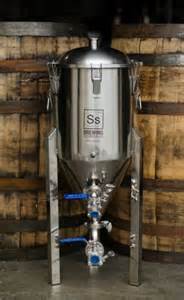I'm only on my second brew (both 5 gallon extract and specialty grain beers with pellet hops) with ice bath to cool. When it comes time to siphon it to the fermenter all is fine until I get to the last few inches when the crud from the boil starts to show.
My plan this time was to whirlpool the kettle to gather the kettle snot in the middle and then siphon the wort from the edge (and so leave only a small amount of wort with all the junk in the kettle). The boil itself seemed to go just fine - it boiled, it frothed up (but didn't boil over this time), and then settled to a nice rolling boil with what looked like bits of dark flecks of leaf glittering and roiling away (hot break?). The cooling was OK if laborious (keeping the ice topped up outside the kettle and replacing the warmed bath water with fresh cold water). An hour later the wort had cooled from ~200 to 65 so time to siphon.
Again, all OK until the wort level dropped to the last few inches and the gloop (which obviously hadn't been reading up on how whirlpooling works) just started to spread out and flow toward and into the siphon (see the photo below).
As per John Palmer:
So how much is 'a moderate amount'? On the one hand I don't want to overload my beer with break material that will add off-flavors (I can do that perfectly well myself) but I also don't want to leave wort in the kettle and prejudice my OG. This second batch I passed the wort through a (sanitized) sieve to get the worst of the material out before I hit the dregs, but how much break should I even allow into the siphon?
Should I avoid as much as possible and just take the hit on the OG, or just pass it all through the sieve and use that to mechanically filter the material?
I took a couple of shots of the last few inches as it spread out toward the siphon. Are these hot break proteins I should avoid, or cold break that I can allow more of through?

***having some problems linking to the pics which are at http://1drv.ms/1G9bQe8
My plan this time was to whirlpool the kettle to gather the kettle snot in the middle and then siphon the wort from the edge (and so leave only a small amount of wort with all the junk in the kettle). The boil itself seemed to go just fine - it boiled, it frothed up (but didn't boil over this time), and then settled to a nice rolling boil with what looked like bits of dark flecks of leaf glittering and roiling away (hot break?). The cooling was OK if laborious (keeping the ice topped up outside the kettle and replacing the warmed bath water with fresh cold water). An hour later the wort had cooled from ~200 to 65 so time to siphon.
Again, all OK until the wort level dropped to the last few inches and the gloop (which obviously hadn't been reading up on how whirlpooling works) just started to spread out and flow toward and into the siphon (see the photo below).
As per John Palmer:
But the next line has:It is a good idea to remove the hot break (or the break in general) from the wort before fermenting. The hot break consists of various proteins and fatty acids which can cause off-flavors, although a moderate amount of hot break can go unnoticed in most beers.
How to Brew S1 C9.1 Transferring the WortThe cold break is not considered to be much of a problem, in fact a small amount of cold break in the fermenter is good because it can provide the yeast with needed nutrients. The hops do not matter at all except that they take up room.
So how much is 'a moderate amount'? On the one hand I don't want to overload my beer with break material that will add off-flavors (I can do that perfectly well myself) but I also don't want to leave wort in the kettle and prejudice my OG. This second batch I passed the wort through a (sanitized) sieve to get the worst of the material out before I hit the dregs, but how much break should I even allow into the siphon?
Should I avoid as much as possible and just take the hit on the OG, or just pass it all through the sieve and use that to mechanically filter the material?
I took a couple of shots of the last few inches as it spread out toward the siphon. Are these hot break proteins I should avoid, or cold break that I can allow more of through?

***having some problems linking to the pics which are at http://1drv.ms/1G9bQe8
Last edited:








![Craft A Brew - Safale BE-256 Yeast - Fermentis - Belgian Ale Dry Yeast - For Belgian & Strong Ales - Ingredients for Home Brewing - Beer Making Supplies - [3 Pack]](https://m.media-amazon.com/images/I/51bcKEwQmWL._SL500_.jpg)



















































